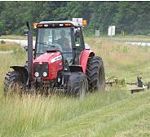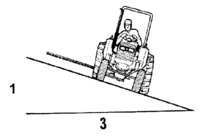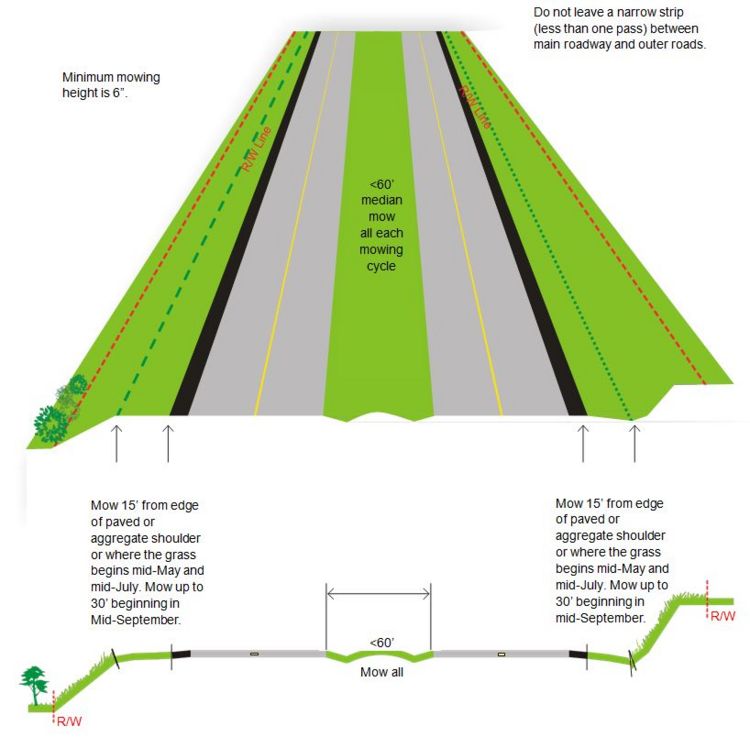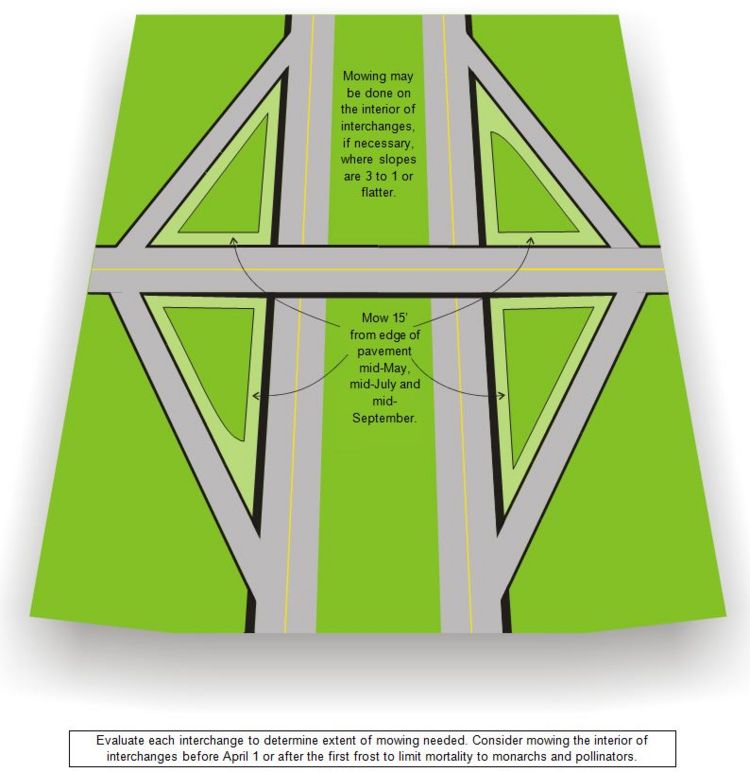822.1 Vegetation Management for Major Roads

Consistency is expected on major corridors. Coordination of mowing is needed to ensure no abrupt changes in roadside management practices are apparent at district or area boundaries.
Minimum mowing height is six inches.

Slopes steeper than 1V:3H (3 to 1) and areas not required to be mowed should be planted to wildflowers and native grasses, encouraged to naturalize or landscaped. Pollinator-beneficial vegetation should be promoted or planted in these areas.
Do not leave a narrow strip (less than one additional pass) between the main roadway and outer roads. Areas between the main roadway and the outer roads 30 ft. wide or less should be mowed the entire width with each cycle.
An urban area is where the surrounding land is dominated by housing developments and commercial properties. There are no large gaps of areas without housing or commercial development. Each urban area should be evaluated to determine the extent of mowing needed. Urban areas may be mowed more often and wider but the intent is to reduce the total acres mowed and number of mowing cycles.
Community mowing may be done for special events, festivals and fairs. This mowing should be one pass. All mowing must be part of the planning process to avoid unnecessary mowing.
PGRs mixed with a broadleaf herbicide may be used to reduce mowing cycles and trimming around guardrails, guard cables, sign posts and sight distance areas. Selectively applying herbicides to control brush up to 50 ft. from the roadway is permitted.
The number of mowing cycles may be adjusted and coordinated statewide if growing conditions require it.
Main Roadway
Within two weeks prior to Memorial Day and mid-July, mow all major roads up to 15 ft. from the edge of the paved or aggregate shoulders or where the grass begins unless physically obstructed. Beginning mid-September, mow all major roads up to 30 ft. from the edge of the paved or aggregate shoulders or where the grass begins unless physically obstructed. Selectively applying herbicides to control brush up to 50 ft. is permitted.
| Mowing Width per Cycle on Major Routes | |
|---|---|
| 1st cycle | Mow 15’ |
| 2nd cycle | Mow 15’ |
| 3rd cycle | Mow up to 30’ |
Medians
Medians narrower than 60 ft. shall be mowed entirely each mowing cycle. Medians wider than 60 ft. may be mowed 15 ft. in each direction and, if narrower than 100 ft., should be mowed entirely for the final mowing. Medians wider than 100 ft. should be mowed up to 30 ft. in each direction from the edge of the paved or aggregate shoulders or where the grass begins for the final mowing.


Interchanges
Mowing interchanges requires a large resource commitment. Each interchange should be evaluated as to the extent of mowing needed. Interchanges on major roads shall be mowed 15 ft. from the edge of the paved or aggregate shoulders or where the grass begins unless physically obstructed, two weeks prior to Memorial Day, and mid-July and mid-September. Mowing may be done on the interior of interchanges, if necessary, where slopes are 1V:3H (3 to 1) or flatter.
